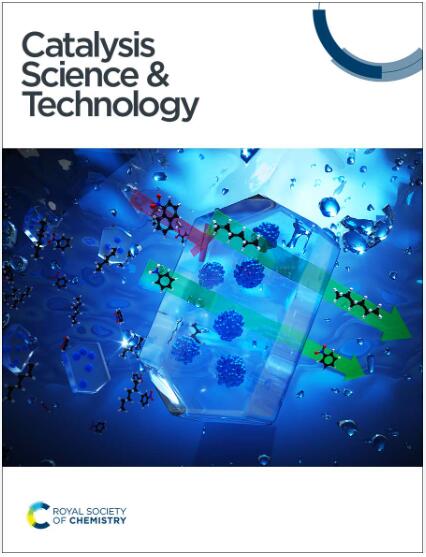Chlorine tailored CdOxCly/Al2O3 for syngas formation in electrochemical CO2 reduction†
IF 4.4
3区 化学
Q2 CHEMISTRY, PHYSICAL
引用次数: 0
Abstract
Electrocatalytic carbon dioxide reduction (eCO2RR) is widely recognized as one of the most promising approaches to produce valuable chemicals especially syngas and mitigate carbon emissions. Hence, it holds immense significance to develop novel catalysts with exceptional efficiency and stability. In the present work, we presented the eCO2RR to syngas over a CdOxCly/Al2O3 nanorod catalyst (denoted as CdOxCly/Al2O3 NRs) in an H-type cell. The results showed that the catalyst provides an adjustable H2/CO ratio over a wide potential range of −1.0 V to −1.4 V (vs. RHE). The current density reached 59 mA cm−2 at a potential of −1.4 V (vs. RHE) in 0.5 M KHCO3 electrolyte. The introduction of chlorine increased the conductivity of the catalyst and promoted the electron transfer, which was further conducive to the production of CO. The preparation strategy of catalysts has important guiding significance for the design and preparation of catalysts with high efficiency in the eCO2RR to syngas.

在电化学二氧化碳还原过程中生成合成气的氯定制 CdOxCly/Al2O3†
本文章由计算机程序翻译,如有差异,请以英文原文为准。
求助全文
约1分钟内获得全文
求助全文
来源期刊

Catalysis Science & Technology
CHEMISTRY, PHYSICAL-
CiteScore
8.70
自引率
6.00%
发文量
587
审稿时长
1.5 months
期刊介绍:
A multidisciplinary journal focusing on cutting edge research across all fundamental science and technological aspects of catalysis.
Editor-in-chief: Bert Weckhuysen
Impact factor: 5.0
Time to first decision (peer reviewed only): 31 days
 求助内容:
求助内容: 应助结果提醒方式:
应助结果提醒方式:


